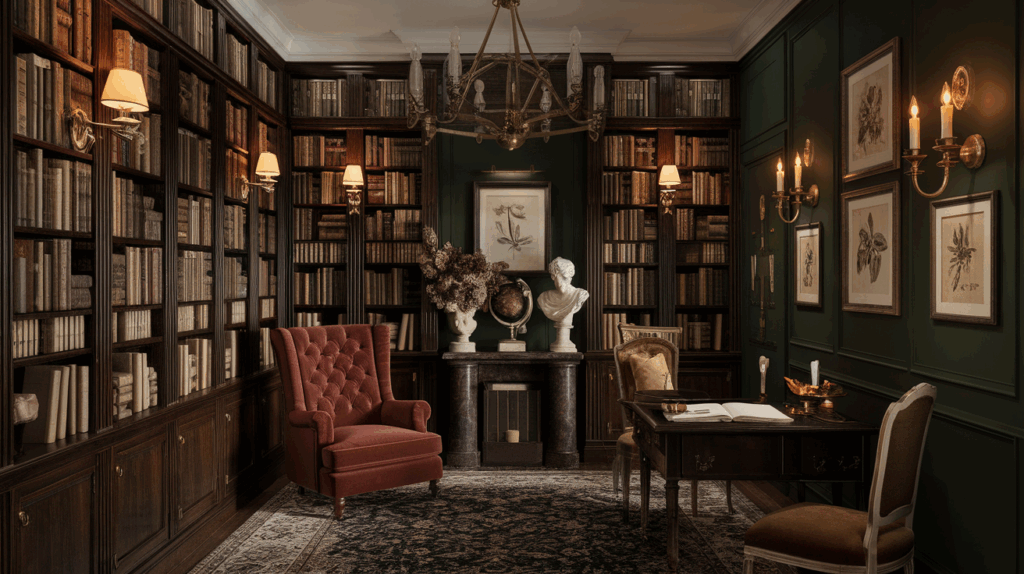There’s something romantic and grounding about a space that feels like a study from another era.
I’ve always loved the creak of old floors, the texture of worn books, and the scent of aged paper.
So, creating a dark academia home library felt more like building a retreat than decorating.
This style isn’t just a trend; it’s a tribute to learning, nostalgia, and quiet reflection.
Even with just a reading nook or small corner, you can bring this cozy, intellectual vibe to life.
In this blog, I’ll share ideas that blend classic design with warmth and thoughtfulness, perfect for anyone wanting a space that feels timeless, personal, and full of character.
What Is Dark Academia?
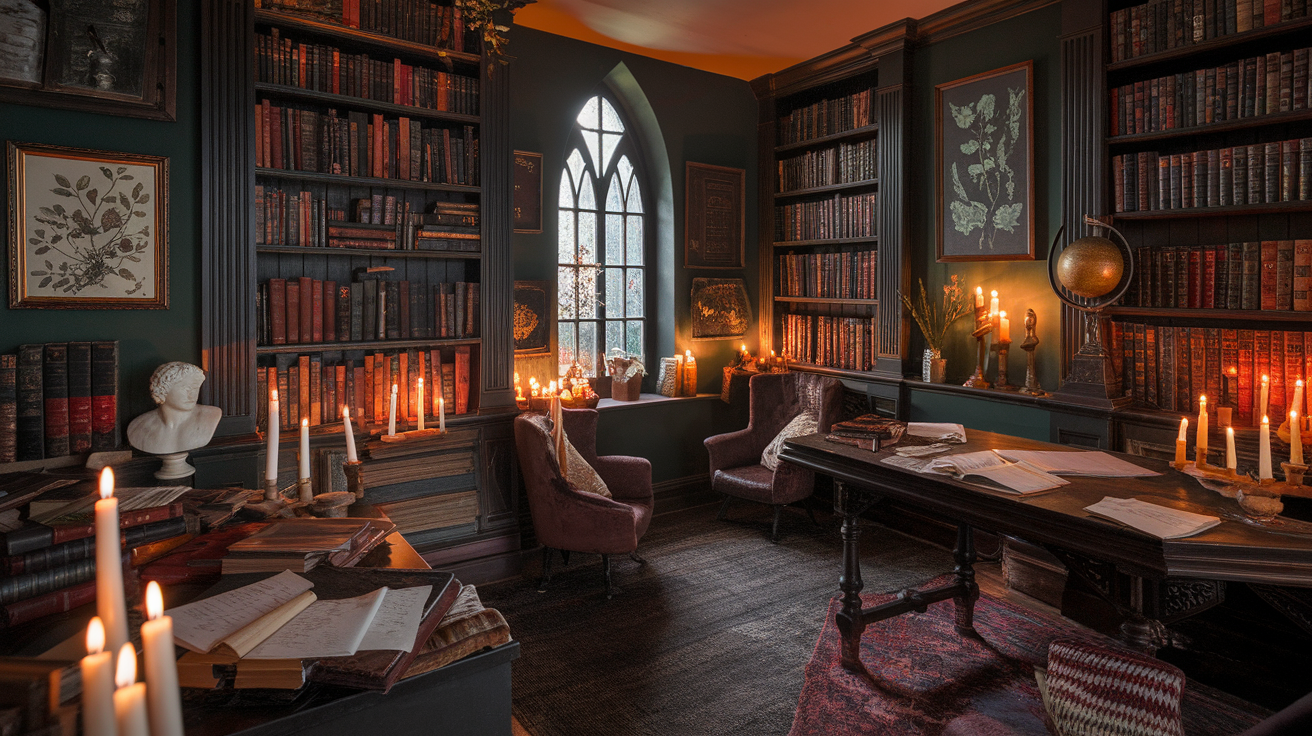
Dark academia is an aesthetic and cultural movement rooted in a love for classical literature, old universities, and the romanticism of scholarly life.
It embraces the moody beauty of candlelit libraries, handwritten notes, tweed blazers, and weathered bookshelves.
Beyond style, dark academia celebrates introspection, poetic thinking, and a slower, more thoughtful way of living.
When applied to home design, especially in a library, it creates a space that feels both intimate and inspiring, ideal for reading, writing, and quiet reflection.
This aesthetic often draws inspiration from Gothic architecture, ancient texts, and the timeless rituals of study.
It’s a way to make your environment feel steeped in history and emotion, perfect for those who find beauty in solitude, mystery, and meaning.
Creative Dark Academia Home Library Ideas
From moody lighting and antique décor to personalized touches and classic materials, each element brings timeless character and intellectual depth to your reading sanctuary.
1. Deep, Moody Wall Colors
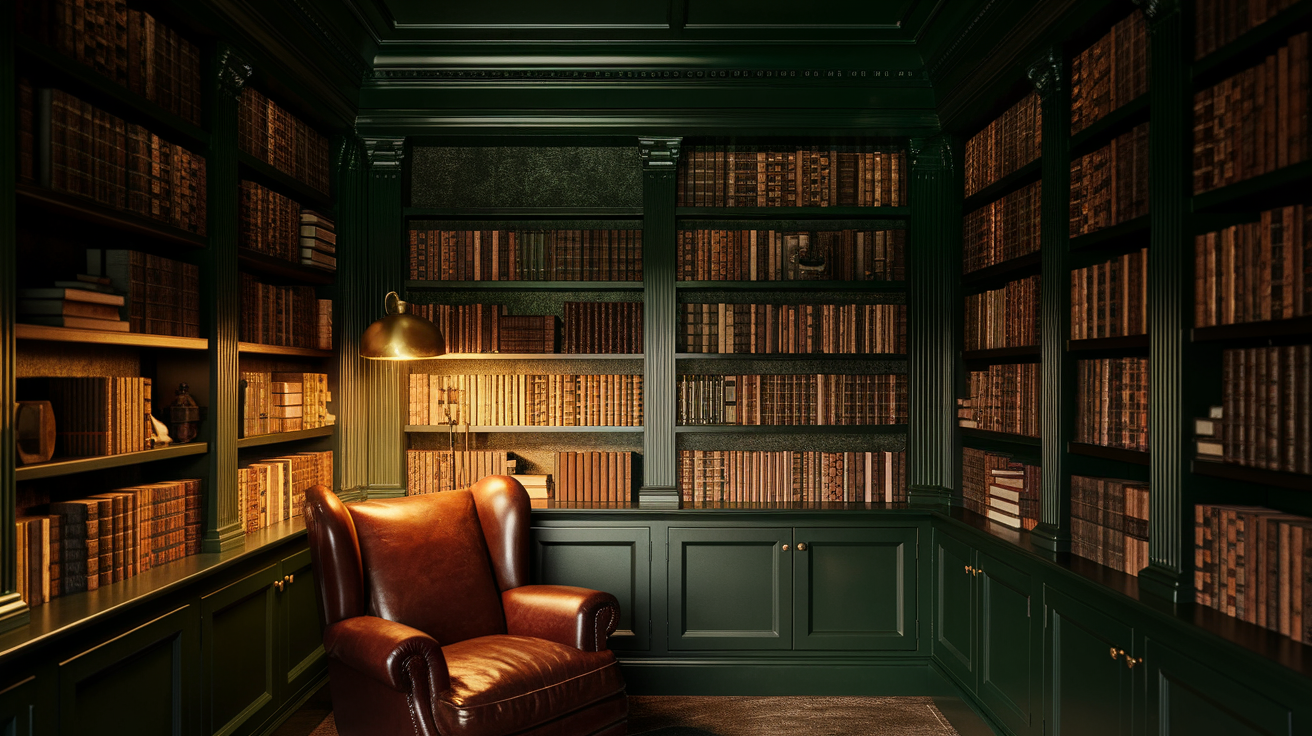
Set the tone with rich paint colors like forest green, charcoal gray, or oxblood red.
These shades create an enveloping atmosphere and bring a sense of quiet intensity to your library.
Matte finishes or textured wallpapers add depth and drama, turning even small rooms into immersive retreats. Use color drenching to paint walls, ceilings, and trim the same shade.
Pair with antique lighting for a theatrical feel. Deep colors also reduce visual distractions, ideal for focus.
2. Antique Bookshelves

Opt for dark-stained wood or vintage shelving units with character. Look for carved details or brass hardware for extra old-world charm.
These pieces instantly anchor the space and make your books feel like part of a larger story.
Opt for asymmetrical arrangements to mimic old libraries. Add personal artifacts or vintage clocks for layered interest.
Select shelves that display natural wear for added authenticity.
3. Leather-Bound Books

Incorporate collections of leather-bound books or antique editions. Not only do they fit the aesthetic, but they also invite curiosity and reflection.
Thrift shops, estate sales, and online marketplaces are great places to find these timeless pieces.
Create stacks by theme or author for impact. Display open books on stands to highlight their detail. Let spines fade naturally for a worn-in look.
4. Warm, Ambient Lighting

Use table lamps with pleated shades, brass sconces, or vintage chandeliers to achieve a soft, golden glow.
Opt for layered, warm-toned fixtures over harsh overhead lighting.
Candlelight (real or LED) also enhances the intimate, scholarly mood. Use dimmers for customizable ambiance.
Choose amber bulbs for warmth. Lighting should feel inviting, not clinical.
5. Framed Art and Portraits
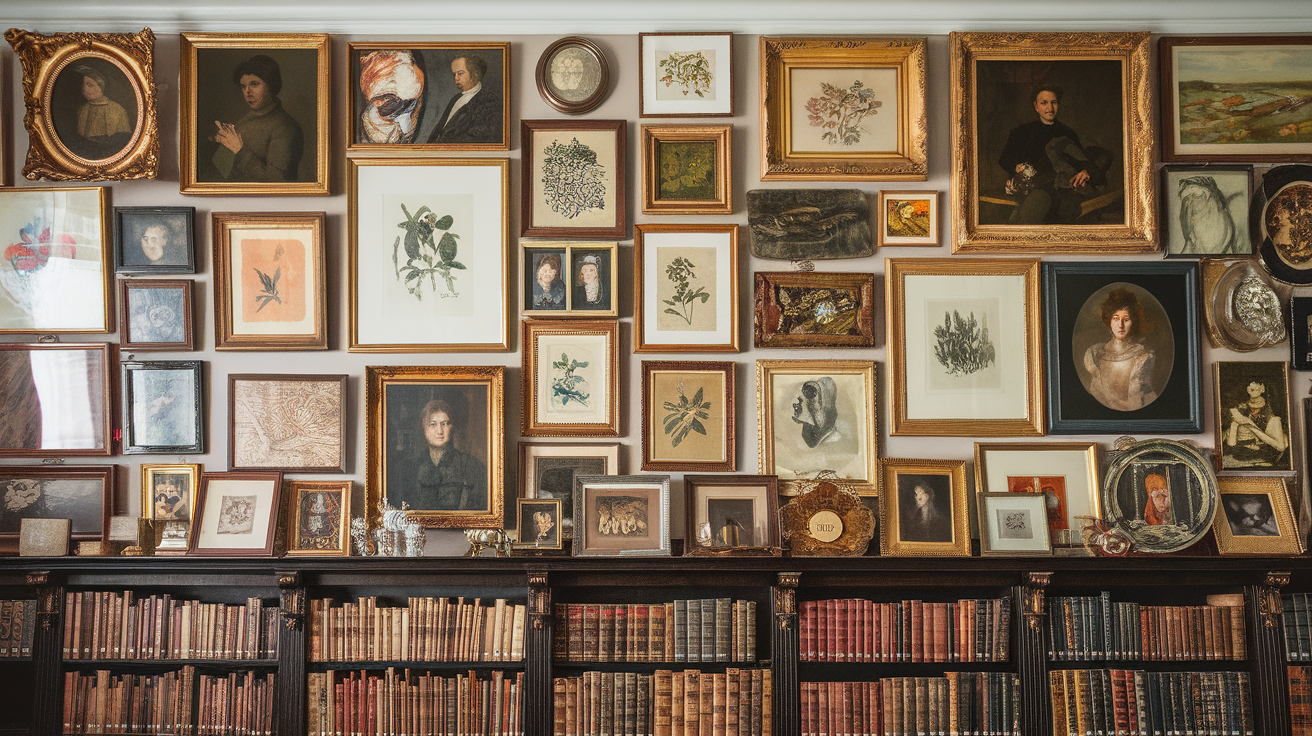
Hang old-world paintings, botanical illustrations, or vintage portraits in gilded or wooden frames.
This adds a gallery-like element and ties the room to academic traditions.
Mismatched frames create a curated feel that’s both elegant and personal. Mix oil paintings with sketch prints for balance.
Lean frames on bookshelves for depth. Avoid modern prints to preserve theme consistency.
6. Textured Rugs and Layered Fabrics
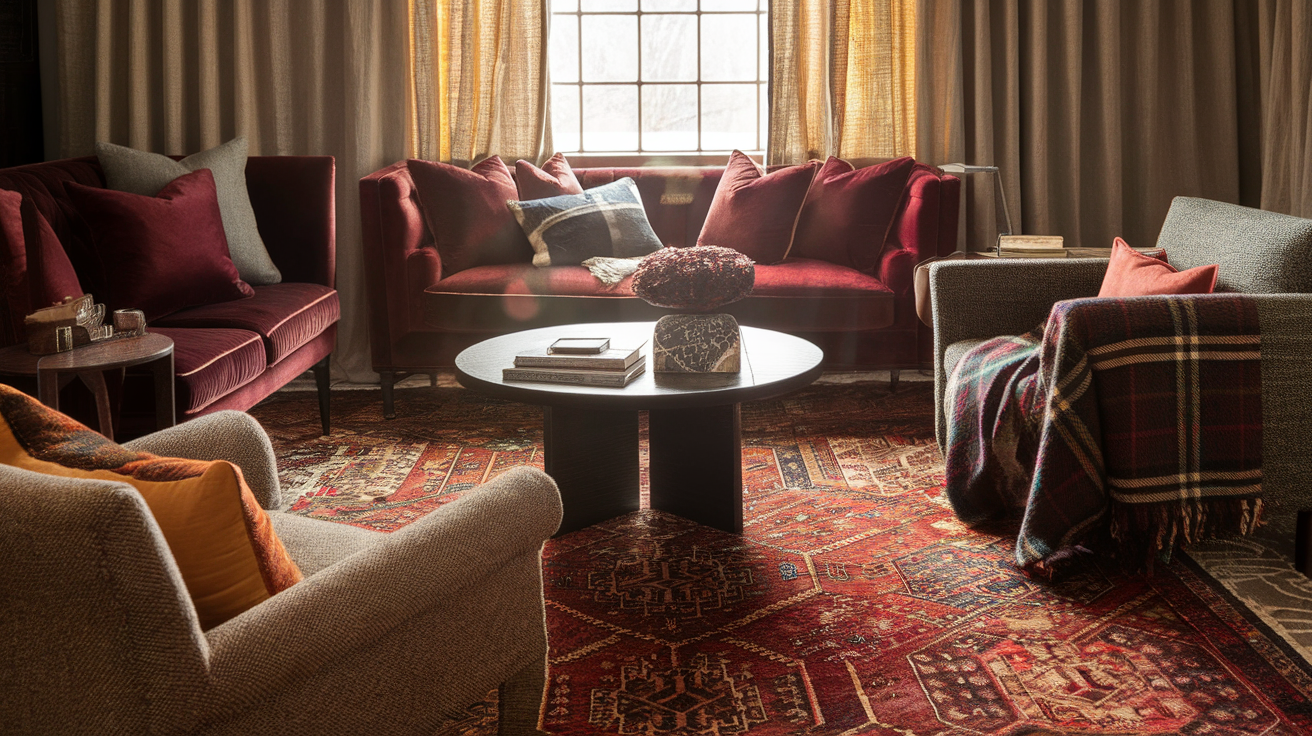
Anchor your space with a Persian or Oriental rug in deep tones. Layer it with velvet cushions, wool throws, or plaid upholstery to make the space inviting.
Texture plays a huge role in achieving that cozy, lived-in look. Drape blankets casually over seating.
Mix muted patterns for a collected vibe. Stick to rich materials like linen, tweed, and corduroy.
7. Hidden Corners and Reading Nooks

Use furniture or bookcases to divide space and create quiet, tucked-away spots.
A deep armchair under a lamp or a window seat surrounded by books instantly enhances the library’s charm.
These hidden zones invite lingering and deep thinking. Add curtains for privacy and mood.
Include a footrest or ottoman for comfort. Keep a side table for tea, journals, or notebooks.
8. Wooden Furniture with Patina

Choose furniture with rich, aged wood, writing desks, console tables, or ladder-back chairs that work beautifully.
The imperfections and wear tell a story and add authenticity to your space.
Avoid anything too modern or glossy. Opt for handmade or antique pieces.
Natural wood grain adds depth. Pair with iron or brass fixtures for contrast.
9. Academic-Themed Decor
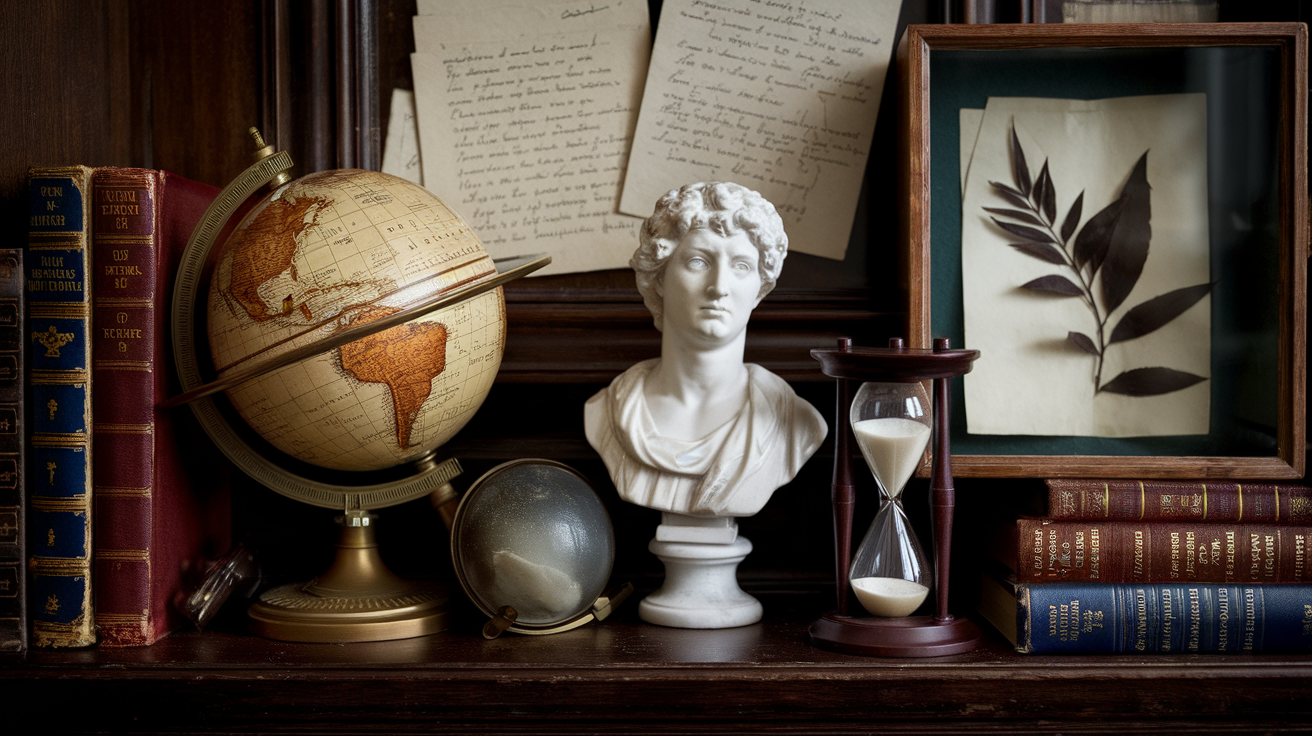
Decorate with globes, busts, hourglasses, or magnifying glasses to echo scholarly traditions.
These elements nod to curiosity and classical education while reinforcing the aesthetic.
You can also display handwritten notes or vintage maps. Use display domes for small collections.
Layer pieces near books for synergy. Balance function with story-driven visuals.
10. Floor-to-Ceiling Bookshelves
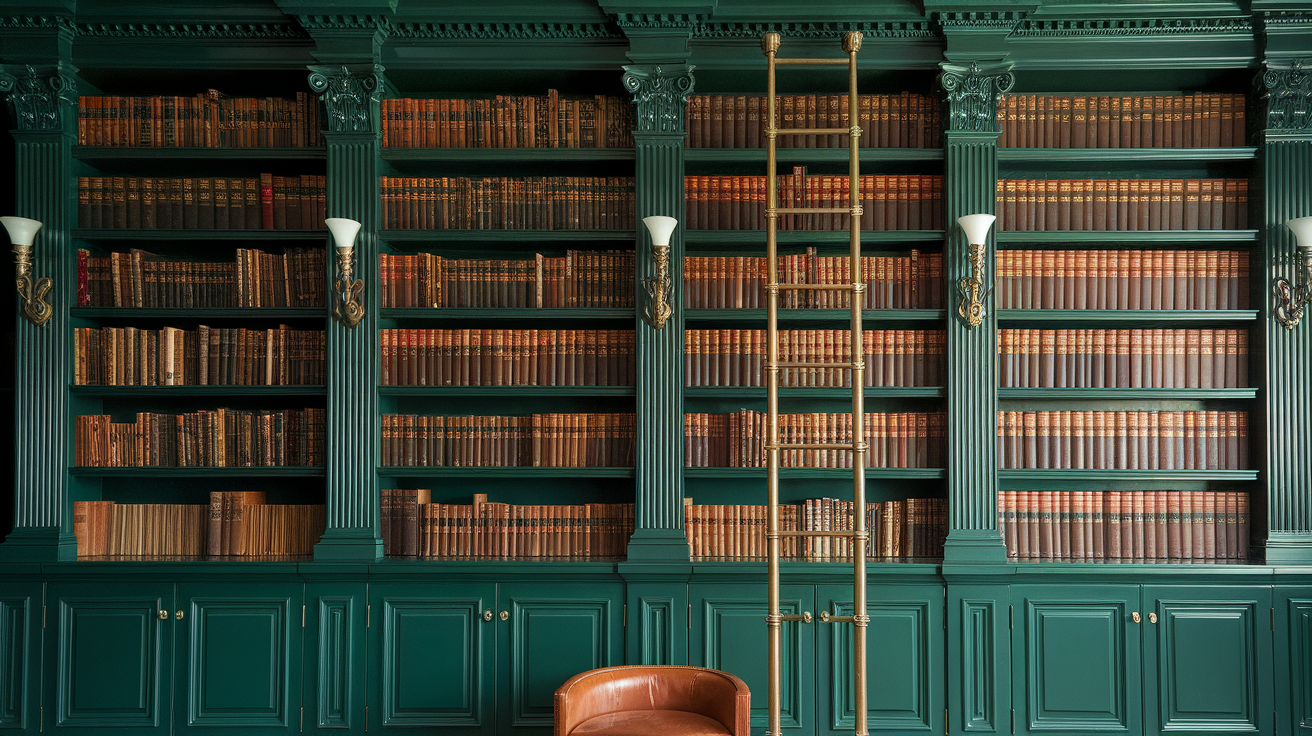
If space allows, install custom shelves that span entire walls.
The grandeur of a floor-to-ceiling library elevates the whole room and puts your collection at the center of the design.
Use a rolling ladder if possible to complete the look. Paint shelves in the same color as the walls for cohesion.
Integrate hidden cabinets at the base for storage. Add crown molding for a built-in feel.
11. Gallery Wall with Literary Themes
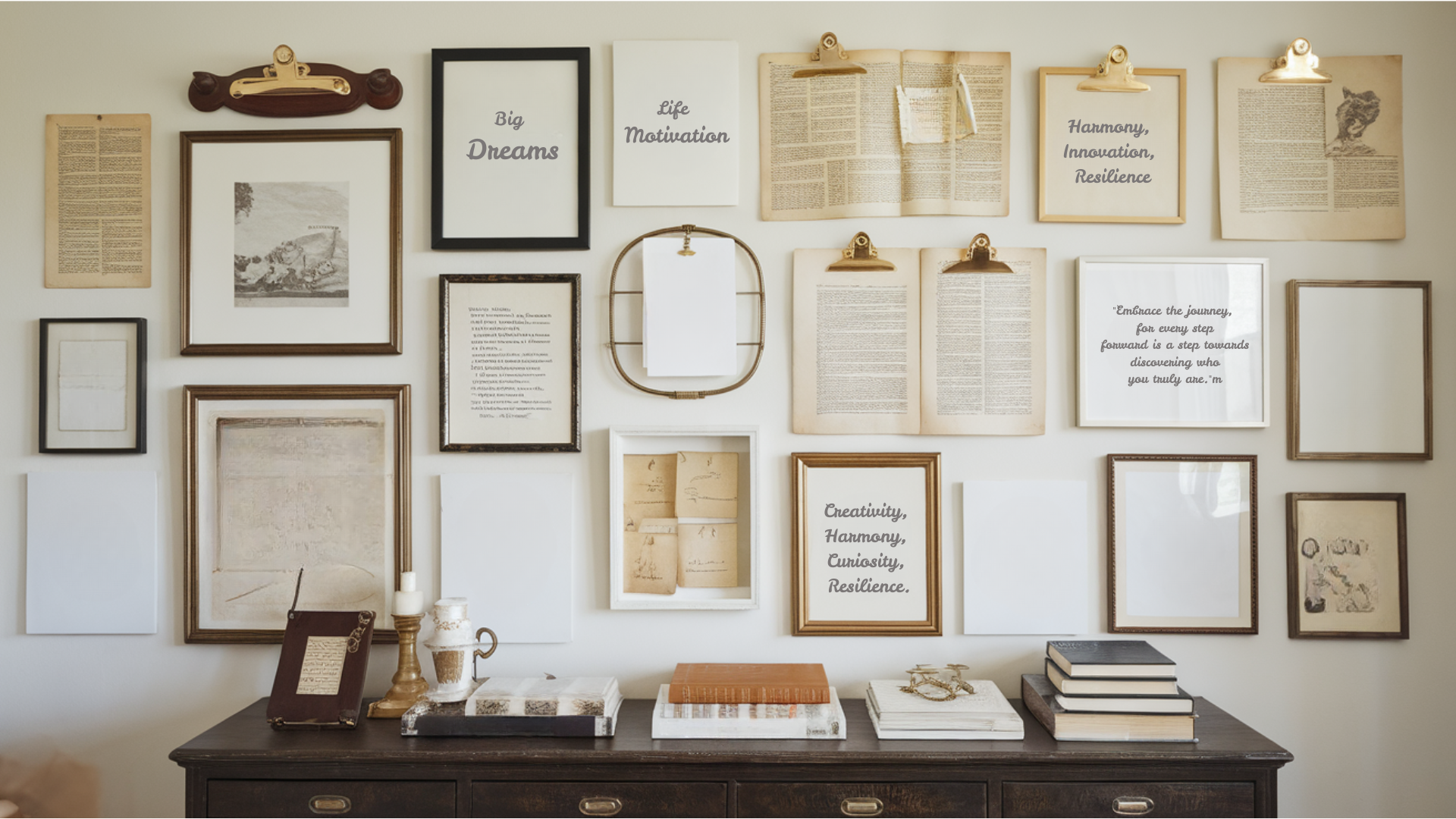
Create a wall filled with quotes, book covers, letters, and drawings. Use neutral tones with touches of brass or gold to keep it cohesive.
This feature celebrates your passion for literature in a bold, visual way. Include hand-written notes or calligraphy.
Use clipboards or pins for changeable displays. Let the wall evolve with your reading.
12. Candles and Scented Elements
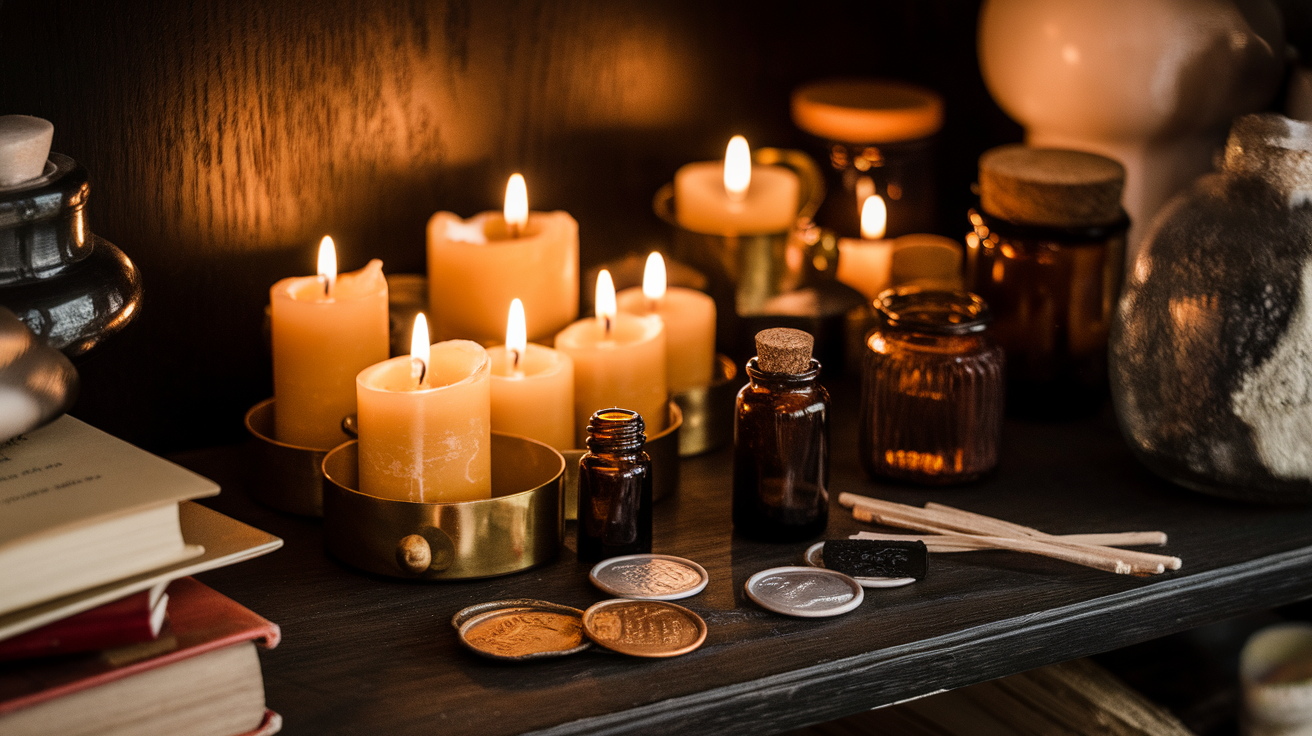
Use candle holders, wax seals, and essential oils to create a sensory layer. Scents like sandalwood, leather, and tobacco fit well with the moody aesthetic.
They help turn reading into a fully immersive experience. Try beeswax or soy candles for a natural scent.
Choose vintage or brass holders. Scent and sound together heighten the atmosphere.
13. Classical Music Setup
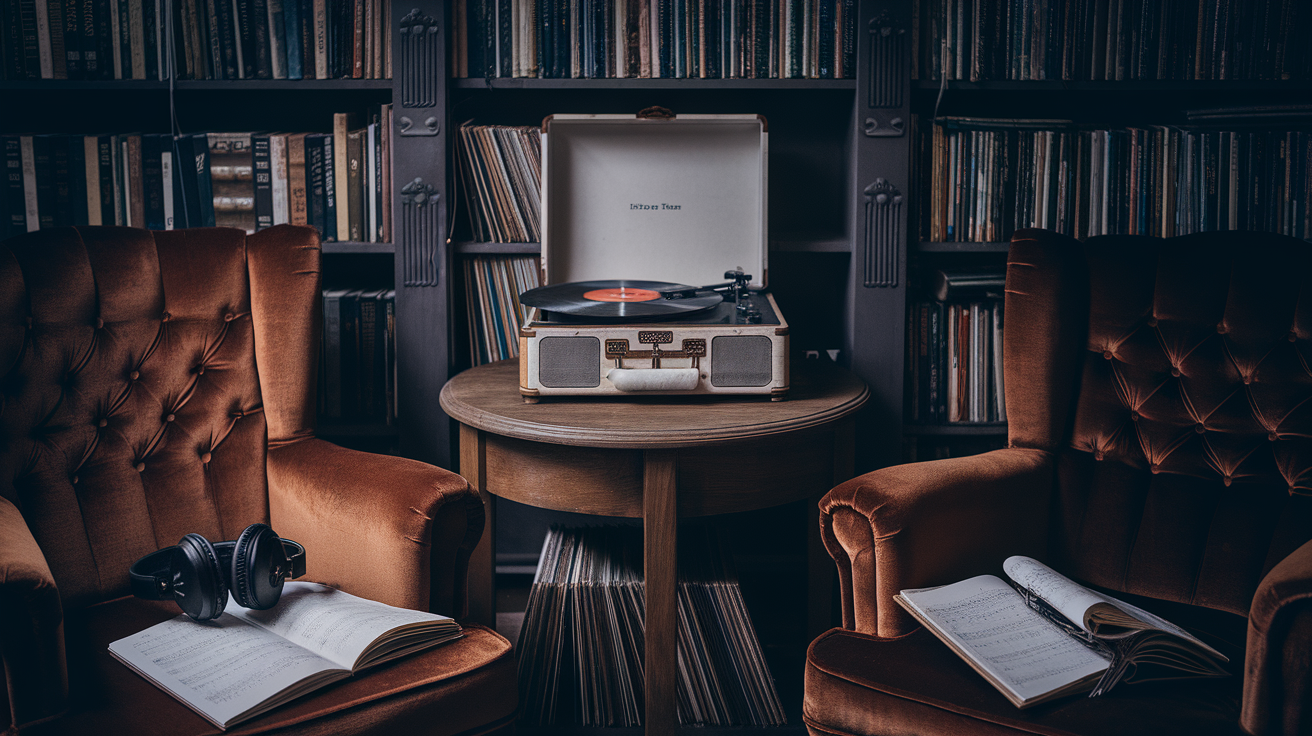
Keep a vintage record player or speaker nearby to play classical music, jazz, or instrumental soundtracks.
The right background music enhances focus and atmosphere.
It makes every moment in your library feel intentional and cinematic. Curate playlists by mood or reading genre. Store records visibly for style. Let music echo the room’s era.
14. A Personal Writing Space
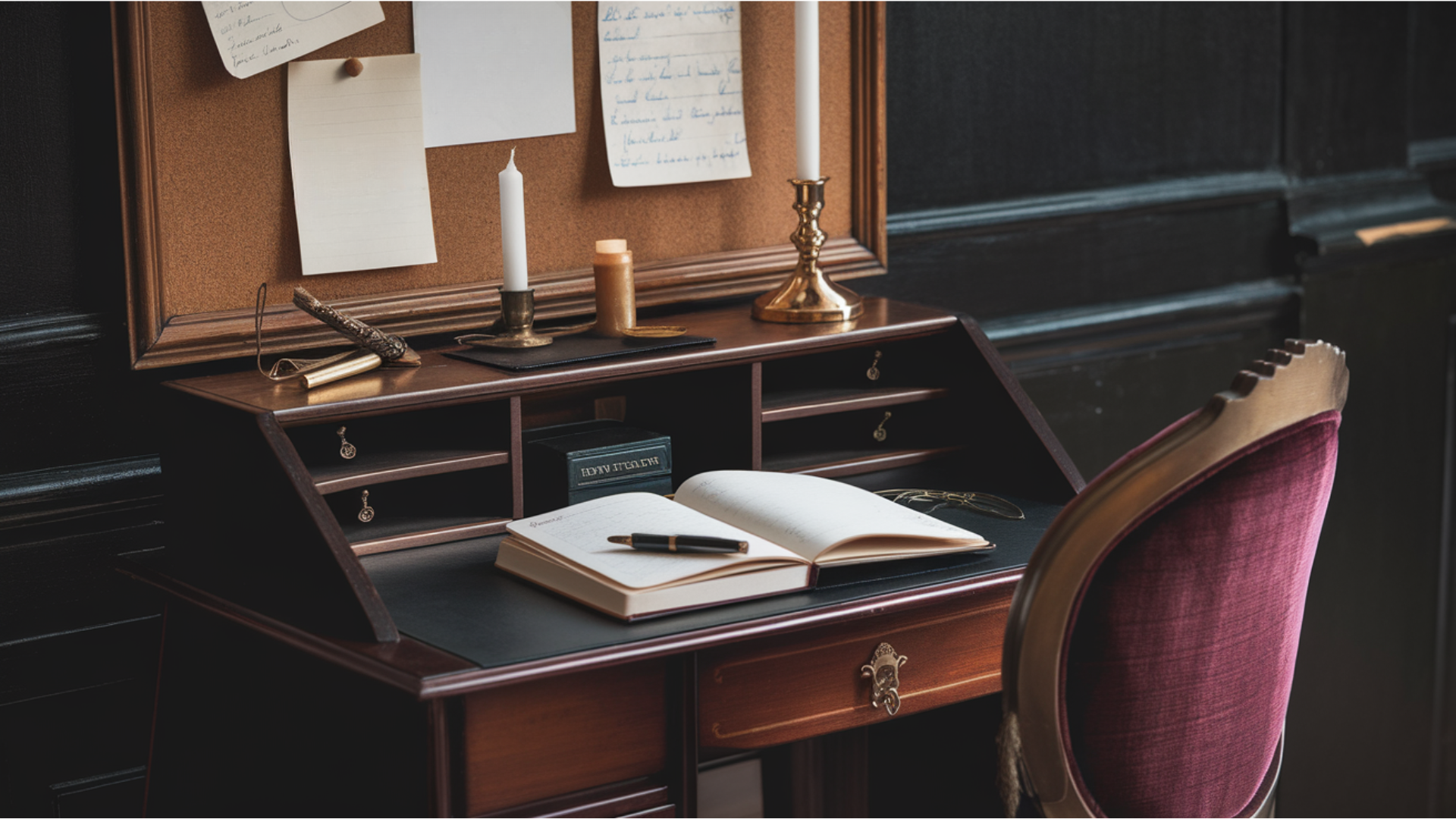
Include a small writing desk with inkwells, stationery, and your favorite pens. It doesn’t have to be large, just functional and charming.
This adds a romantic, productive layer to your library and encourages personal reflection.
Display your journal or letters. Use antique-style accessories for cohesion. Add a personal pinboard or open a sketchbook.
15. Tactile Details and Layered Decor

Mix in objects with texture: marble bookends, linen lampshades, or carved boxes. This layering creates a tactile richness that’s essential to the dark academia feel.
It’s all about thoughtful detail and the charm of the imperfect. Place items in small vignettes. Stack trays or containers. Embrace mismatched finishes.
16. Dark Botanical Elements
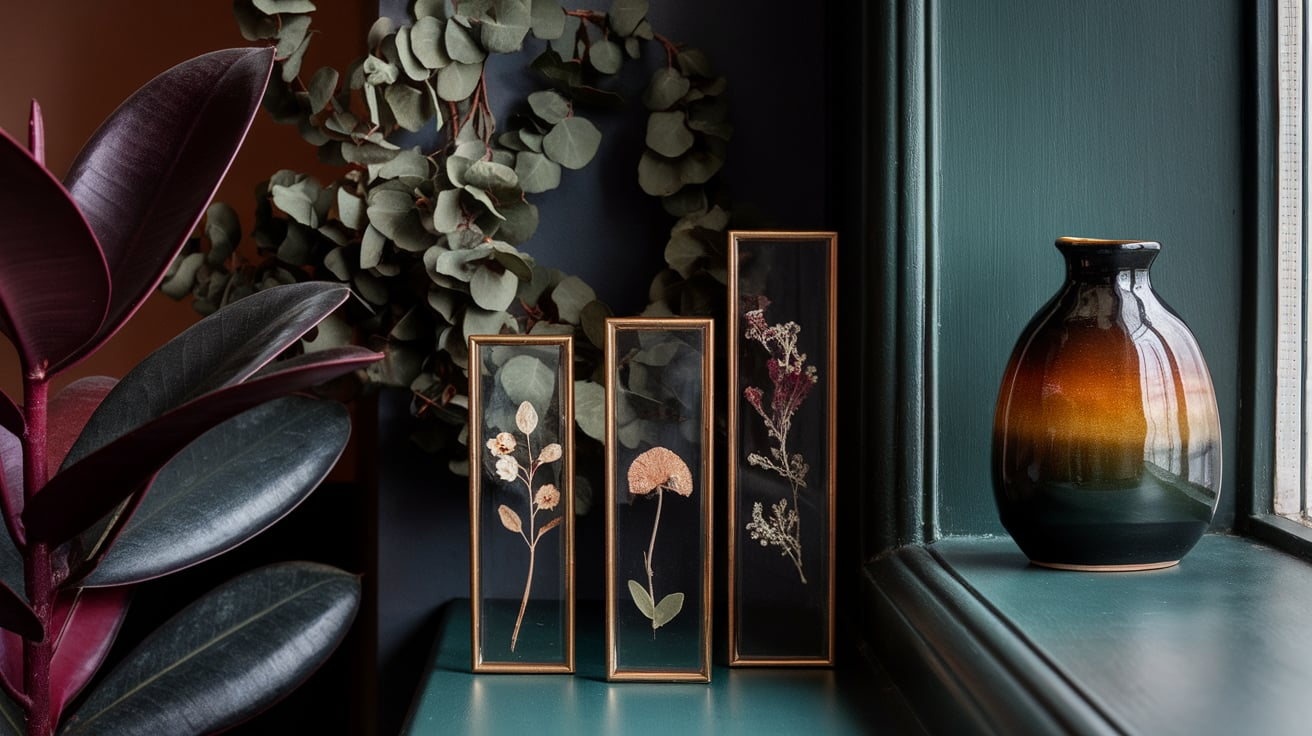
Bring in dried flowers, pressed leaves, or deep-toned houseplants like snake plants or burgundy rubber plants. These elements add life while maintaining the moody palette.
Botanical touches tie nature into the literary spirit of the room. Use amber vases or apothecary jars.
Display pressed plants in glass frames. Choose low-light species for mood.
17. Curated Book Displays
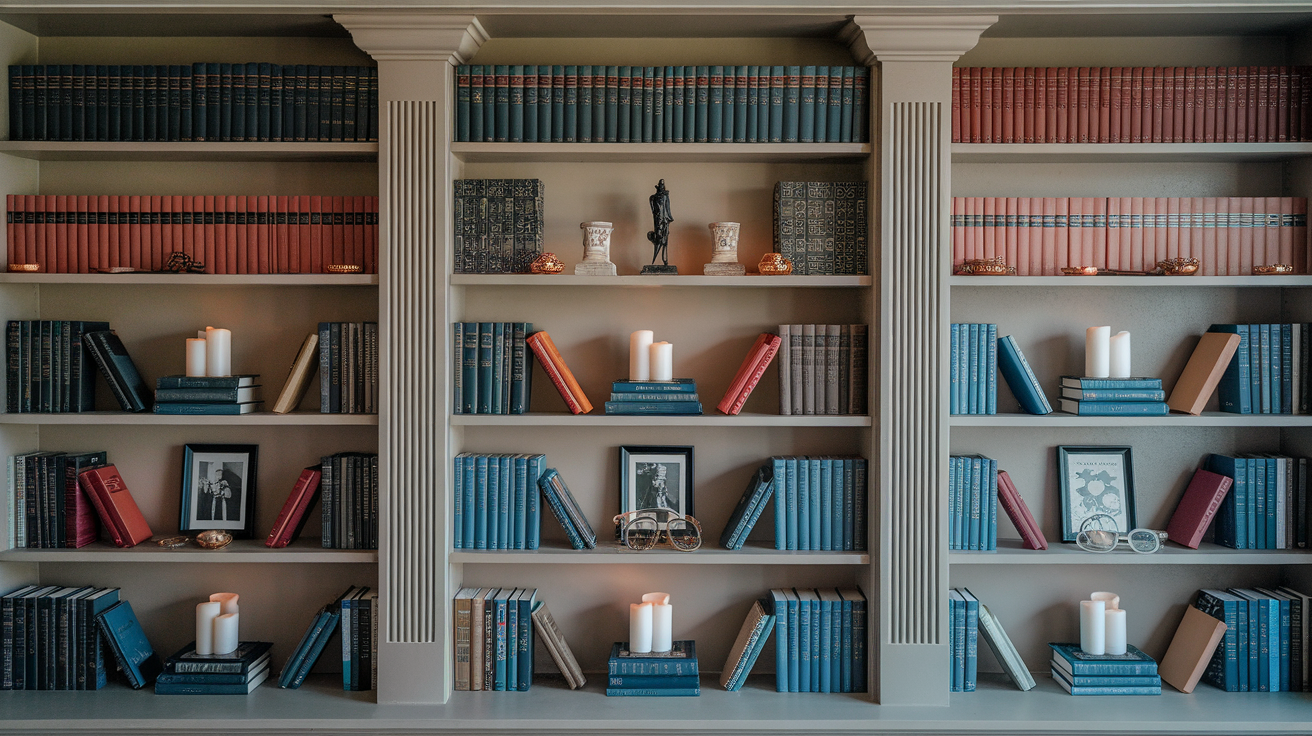
Arrange books by color, theme, or age to tell a visual story. Mix vertical rows with stacked books, and leave space for trinkets or framed photos.
A curated approach to shelving creates beauty through order and narrative. Rotate titles seasonally or by mood.
Integrate personal objects like glasses or notes. Create symmetry or purposefully break it.
Tips for Creating a Dark Academia Home Library
These quick tips can help you stay true to the aesthetic while making your library functional, meaningful, and deeply personal.
- Choose a deep, muted color palette for walls and decor.
- Mix textures like velvet, wood, leather, and wool for richness.
- Use soft, warm lighting, and avoid harsh overhead fixtures.
- Incorporate antique or vintage furniture and accessories.
- Include personal touches like handwritten notes or framed quotes.
- Arrange books by theme, tone, or age for a curated look.
- Add meaningful decor, such as globes, busts, candles, or botanicals.
- Keep clutter minimal but purposeful, let every object tell a story.
- Create layered nooks with cozy seating and soft throws.
- Use ambient music or classical records to enhance mood.
Conclusion
Designing a dark academia home library is like building your own portal into another time, one where books are sacred, ideas matter, and quiet moments are treasured.
For me, this space has become a creative and emotional anchor, filled with intention and nostalgia.
If you’re just getting started or refining an existing room, remember that the details are what make it yours.
Let your library reflect your curiosity, your favorite texts, and your love for slow, meaningful spaces.
Surround yourself with what inspires you and allows you to unplug from the chaos of modern life.
If you’re ready to design your own moody, magical retreat, I’d love to help you bring that vision to life.
Reach out for a personalized consultation, let’s create a space that speaks to your soul.

